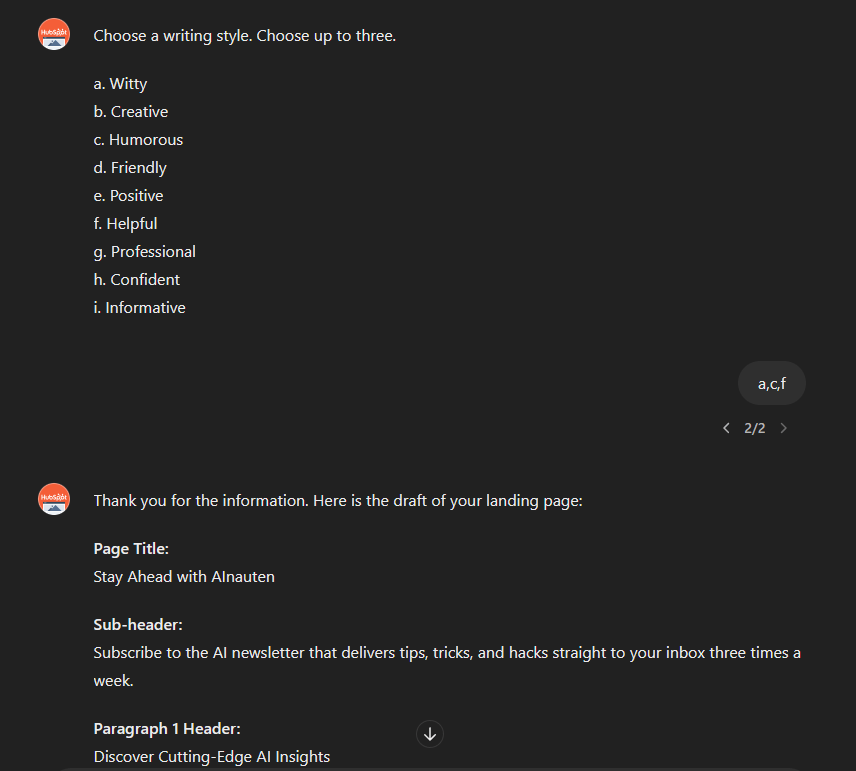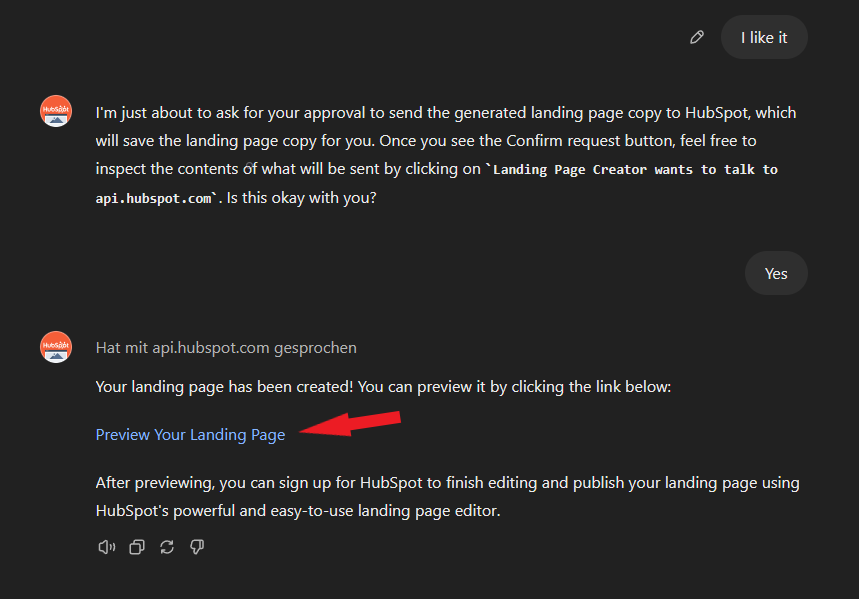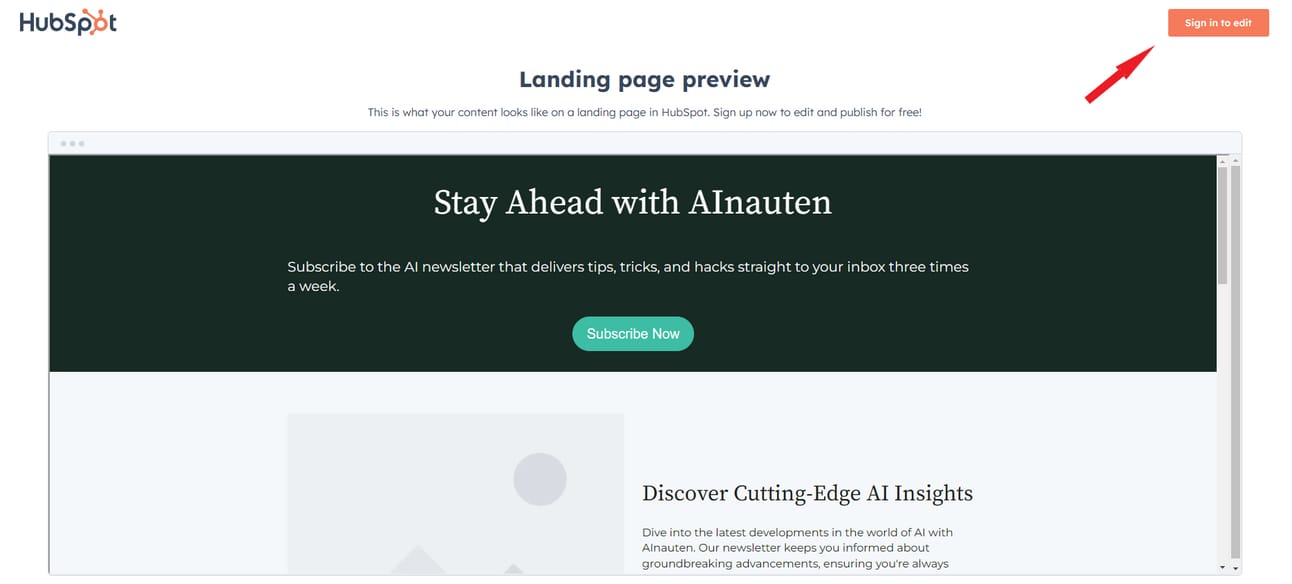- AInauten.net
- Posts
- 🔥 Weekly AI news: Did you miss it?!
🔥 Weekly AI news: Did you miss it?!
👨🚀 The most important AI updates at a glance
🔥 Weekly AI news: Did you miss it?!
👨🚀 The most important AI updates at a glance
AI-HOI, AInauts!
Maybe you didn't catch all the news, tools, and hacks about AI last week, or maybe you've only recently joined us. Either way, here's our recap with all the headlines from the newsletter - just one click away!
Click the links to jump right to the article - or read our picks below.
→ Selection of the top posts of the last week ←
❤️ Google Sheets with AI power: our Top 3 Hacks
If you're staring lost at your Google Sheet and wondering if there's an easier way, then we have good news: AI is your savior in need and always on hand!
Tip 1: Use Apps from the Google Workspace Marketplace
The Google Workspace Marketplace is a real treasure trove of AI tools that can make your life easier. Many of them are free, quickly installed and easy to use - and have often been tried and tested millions of times.
For example: ChatGPT in Google Sheets™ and Docs™ by Talarian, or AI Assist for Gemini™ in Sheets™ and Docs™ by GW Add-ons, Numerous.ai (examples here), etc.

Tip 2: Creating formulas with ChatGPT and Claude Sonnet 3.5
We remember only too well the times when we spent hours searching on Stack Overflow and tinkering with a formula, only to realize in the end that we had forgotten a semicolon ... Those days are numbered, because with ChatGPT and Claude, formula creation really becomes child's play.
Automatic formula creation: You tell ChatGPT what you want to do via the voice function ("Hey ChatGPT, create a formula that colors all cells in column A red if the value is greater than 100.")
Have formulas explained: Copy a complex formula into the chat and ask for it to be "analyzed and explained step by step - so that even beginners can understand it". You can also export the file as Excel and upload it for more context.

As you can see, AI can help you to create and explain formulas and correct errors. But it can also be used to clean and complete data or generate fake test data.
AI also supports you in analyzing and extracting data, explaining, searching and writing code and generating regular expressions (regex). More details here.
Tip 3: Create your own AI app with Google Apps Script
It is really cool to bring the AI functionality directly into your sheet and integrate it into your formulas/cells! Thanks to Claude Sonnet, this is easier than ever before. Here’s a brief overview:
1. Have Claude write an App script: Have Claude Sonnet program a connection to the API of Anthropic (or OpenAI). For example, with this prompt:
2. Install the Google Apps Script: Follow the instructions and open the script editor in Google Sheets under Extensions > Apps Script, and paste the generated code there.
3. Establish the API connection: Connect your Google Sheet to the API and use your new helper formula directly in Google Sheets!
To set this up only takes a few minutes! Here is an example sheet with a ticket system that automatically answers the tickets.
🧩 Conclusion: Your spreadsheets will never be the same again
You are now well-equipped to master any challenge in Google Sheets intelligently. Your creative approach will not only impress your colleagues, but also show your boss that you are a true expert when it comes to modern technologies 😎 Have fun!
P.S.: And if you are a die-hard Excel user, don't worry: Microsoft will certainly be upgrading it with AI features soon - see details here (PDF).
📓 Book tip: Prompt Engineering for Generative AI
This book is a must-read for anyone who wants to understand how generative AI models work - and how to get them to produce the desired result.
It takes a very practical approach: large language models such as ChatGPT and the most important image diffusion models such as Midjourney and Stable Diffusion are covered, as well as LangChain, vector databases with FAISS and Pinecone, autonomous agents with memory and tools, and the creation of AI-supported apps.
As you can see, it's a really comprehensive work. And that's the problem: most of us don’t take the time to study the 785-page book in detail.
That's why we've put together a concise 20-page summary so that you can absorb the most important findings right away. Here you go!

🤓 How smart companies use GPTs as a marketing tool
Even if things have become a bit quiet around OpenAI's GPT Store, GPTs can be a great marketing tool.
Some innovative companies are demonstrating this, and it can also be very exciting for freelancers, consultants, etc. The best thing is that anyone can use it (even users with free accounts can use GPTs - they just can't create one).

What is the idea?
Step 1: You build (or train) your own GPT to help potential customers.
Here are a few ideas:
You're a copywriter - build a GPT for great copywriting
You are a creative agency - build a GPT as a brainstorming assistant
You are a strategy consultant - build a SWOT analysis GPT
You are an astrologer - build a tarot GPT
Step 2: Design your GPT so that it makes a small pitch for you or your company after a certain time or at the end.
Copywriter: These suggestions weren't good enough? Then get in touch with us here ...
Strategy consultant: Now that you know your SWOT, get in touch with us to implement the whole thing ...
The great thing about GPTs is that they deliver real added value to the user, without much effort. And they are often so helpful that existing customers are also happy to use them.
Here are a few practical examples
SaaS companies in particular play this game very well. Their advantage is that they can connect their software directly to ChatGPT via API.
This makes the GPT particularly useful. HubSpot, for example, has published its own GPT landing page.

This GPT helps you to create free content for a structured landing page. By asking clever questions, you'll have the copy ready in just a few minutes!

The first goal is therefore achieved. The potential customer has the content for a well-structured landing page. And all for free.
But now it gets really exciting! The GPT will ask you whether it should create a landing page with these elements.

The GPT is connected to HubSpot via API and is now creating a landing page, which can be viewed free of charge and without registration.

You can see a preview of the landing page directly via the link. If you want to edit it and put it online, you now need to create an account with HubSpot.
The genius of this approach:
GPT users get added value for free
You don't have to do much work with it
Users like you because of the free added value
This gives you leads or customers
Bonus: Existing customers also have a great guide with the HubSpot GPT, which helps them to create good landing pages and then publish them online quickly. Try out the HubSpot GPT Flow, and you'll see just how cool it is:
You can also find similar GPT examples from Veed, Zapier or Canva.

We've also written about ways to monetize GPTs as a non-software company via advertising and affiliate links - you can find details here and here.
How do you build something like this?
Of course, connecting a GPT to an API requires some technical understanding. However, ChatGPT will help you with this!
We won't go over how to build a GPT in general again (you can find that here and here). But getting the GPTs to call an API or link to a contact form etc. is relatively straight forward.
You simply put all the details in the instructions. We have briefly "hacked" the HubSpot instructions to show you how they are doing it:

As you can see, simply describe the desired outcome and the GPT will do what you want it to do. Just give it a try!
🎙️ More and more AI influencers and singers are among us
We have often written about the trend of AI influencers. At the end of 2023, we also presented a small workflow on how to build such virtual influencers.
A new example is coming out of Germany, produced by the agency Construktiv out of Bremen. It has brought Ben Gaya to life.
This shows that such virtual personalities are becoming increasingly popular and can also make huge deals with well-known brands.

Ben is Europe's first male AI singer and has already gained a major cooperation partner shortly after his launch: Nickelodeon!
This is what Ben looks like - just click and listen to the song.
Ben has now also released his first song and a video, to which you can listen here:
We think it's pretty cool to see such developments. The best thing about it is that such "Bens" are not extremely difficult to implement. Of course, the devil lies in the detail, but this is what a possible tool stack could look like:
Midjourney or Stable Diffusion for creating the initial images
Fooocus for face swaps, image editing and consistency
D-ID for animated mouth movements for songs
Suno for the sound and music creation
Runway for videos and image animation
What do you think about this trend? Bad, because real art is being lost? Or great, because it offers many possibilities?
Your AInauts, Fabian & Reto
Your feedback is essential for us. We read EVERY comment and feedback, just respond to this email. Tell us what was (not) good and what is interesting for YOU.
🌠 Please rate this issue:Your feedback is our rocket fuel - to the moon and beyond! |




